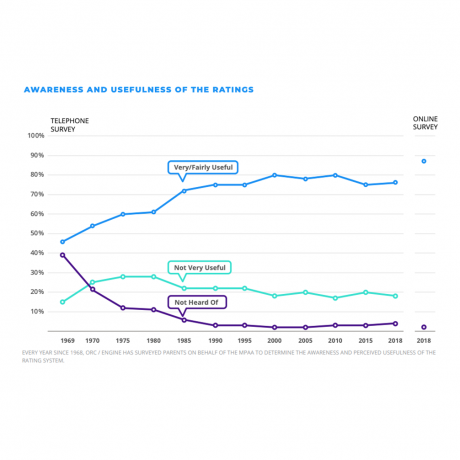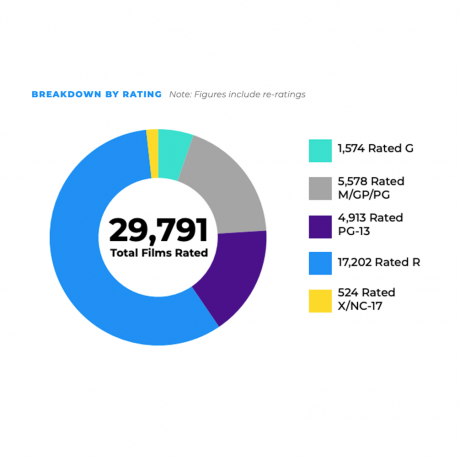
CEO
Letter
As the father of two children now in their twenties, it seems like only yesterday that these ratings helped me and my wife decide if a certain movie was appropriate for our kids. That’s why it is with great delight and pride that I join everyone here at the MPAA in celebrating the 50th anniversary of the Classification and Rating Administration (CARA).
Read moreCEO
Letter
G. PG. PG-13. R. NC-17. These simple letters are synonymous with the moviegoing experience.
As the father of two children now in their twenties, it seems like only yesterday that these ratings helped me and my wife decide if a certain movie was appropriate for our kids. In my early career, I spent two decades running youth-focused entertainment companies, at The Jim Henson Company and WildBrain. At both companies, age-appropriate content was our business, so the care that parents apply to their children’s viewing habits is very familiar to me.
Now, as Chairman and CEO of the Motion Picture Association of America, an important part of my job is to act as a steward of the MPAA film ratings. That’s why it is with great delight and pride that I join everyone here at the MPAA in celebrating the 50th anniversary of the Classification and Rating Administration (CARA).
Fifty years is an important milestone in any walk of life, from birthdays to great marriages to successful companies and brands. But given the extraordinary changes in our culture, entertainment, and society over recent decades, this anniversary feels particularly hard-earned and special.
My predecessor Jack Valenti, created the MPAA ratings in 1968 amid mounting calls for censorship and the specter of government intervention. It is important to remember the context of that transformative year and decade for American life – the sexual revolution, Vietnam, political assassinations, racial strife – and how the expansion of mass media was seen as a threat by many corners of society.
Jack forged a dynamic program that would provide American parents with a reliable and easy-to-use tool to help them make viewing choices for their children, while also protecting the First Amendment rights of filmmakers and the creative process. He also had the good sense to form a partnership with the exhibitor community, represented by the National Association of Theatre Owners (NATO), which is on the front lines of American families’ reactions to movies and ratings. I am fortunate to have a strong, collaborative relationship with my counterpart at NATO, President and CEO John Fithian.
Through the decades, the rating system gained credibility and acceptance with audiences—and today it stands as the gold standard of voluntary industry self-regulation.
We could point to many factors behind the ratings’ success. But the clearest one of all comes directly from its founding mission: to maintain the trust and confidence of American parents.
Meeting this critical standard required a dynamic system that could evolve along with society. One way we achieved this was by appointing movie raters who are themselves parents, who reflected diverse backgrounds, and who came from different regions of the country. Under the leadership of the CARA Chair, Joan Graves, we have continued to align the ratings with the views of America’s parents by conducting regular surveys and listening to feedback from parents around the country.
It should come as no surprise, in a diverse country like ours, that we have heard voices and views from all sides. We are well aware we have our share of detractors and that ratings are inherently imperfect. Some consider us overly permissive; others insist we are prudes. After rating nearly 30,000 films in 50 years, the overwhelming majority of which are accepted by filmmakers and the public without controversy, I believe we tend to get it right.
The internet and other technological advances have also encouraged the ratings to evolve. We have come a long way from the days of sending weekly rating designations by mail to newspapers, where they ran in print. Moviegoers today are more likely to look up rating information on FilmRatings.com, other websites, mobile apps, or electronic ticket kiosks.
But that’s not all. For 3D movies, raters don glasses in order to view a movie just as an audience would. The last-minute nature of CGI production means our rating team sometimes gives a preliminary rating before the most elaborate special effects scenes are completed. In the last year, the advertising team has reviewed more than 68,000 pieces of marketing materials, from trailers and one-sheets to Twitter ads, Snapchat videos, and even gifs.
It’s not inconceivable that one day soon a studio will break the mold and release a feature film in virtual reality. When that happens, our rating team will be ready.
As long as human beings continue to seek out stories in movie theaters, on their living room televisions, or the palm-sized screens of their iPhones, and as long as parents continue to seek reliable information about what content is suitable for their families, we will do our part to support and inform them. After all, parents are among the most important decision-makers in society. If we can keep their faith, we know we have positioned ourselves for the best possible future.
Charles H. Rivkin
Chairman and CEO
Motion Picture Association of America

Parent
Survey
A new 2018 survey conducted by The Nielsen Company on behalf of the MPAA studies American parents' perceptions and expectations as they relate to movie content and the rating system.
Download survey
“G” is for
Golden
A new report, “G” is for Golden: The MPAA Film Ratings at 50, takes a detailed look at the history, evolution, and process behind the ratings.
Download report
MPAA Ratings
By The Numbers
For the first time ever, the MPAA is releasing comprehensive data on all films rated throughout its 50-year history. The rating board is fast approaching an impressive 30,000 films rated since 1968. Below are some key facts and figures on ratings and appeals throughout the years.
Awareness &
Usefulness of the ratings
Since 1968, ORC International (now Engine Insights), has surveyed parents annually on behalf of the MPAA to determine the awareness and perceived usefulness of the rating system. Year after year, these surveys show that the majority of parents are aware of the ratings and accompanying descriptors and find them useful.
Breakdown
By Rating
Over its 50-year history, the MPAA has rated an average of 587 movies a year, with a high of 940 films rated in 2003, near the peak of the DVD boom. (Note: Excluding 2018, since full numbers are not yet available for the year. Figures include re-ratings.)

50 years of
ratings
Since its inception fifty years ago, the MPAA rating system has adapted to the evolving needs of American parents to build trust and gain credibility. Learn about some of the milestones along the way.
Start timeline
The Hays Code
is Born
The Motion Picture Producers and Distributors Association (or MPPDA, the original name of the MPAA) creates the Motion Picture Production Code, more commonly known as the Hays Code, to provide guidelines to studios facing censorship boards and public outcry.
Next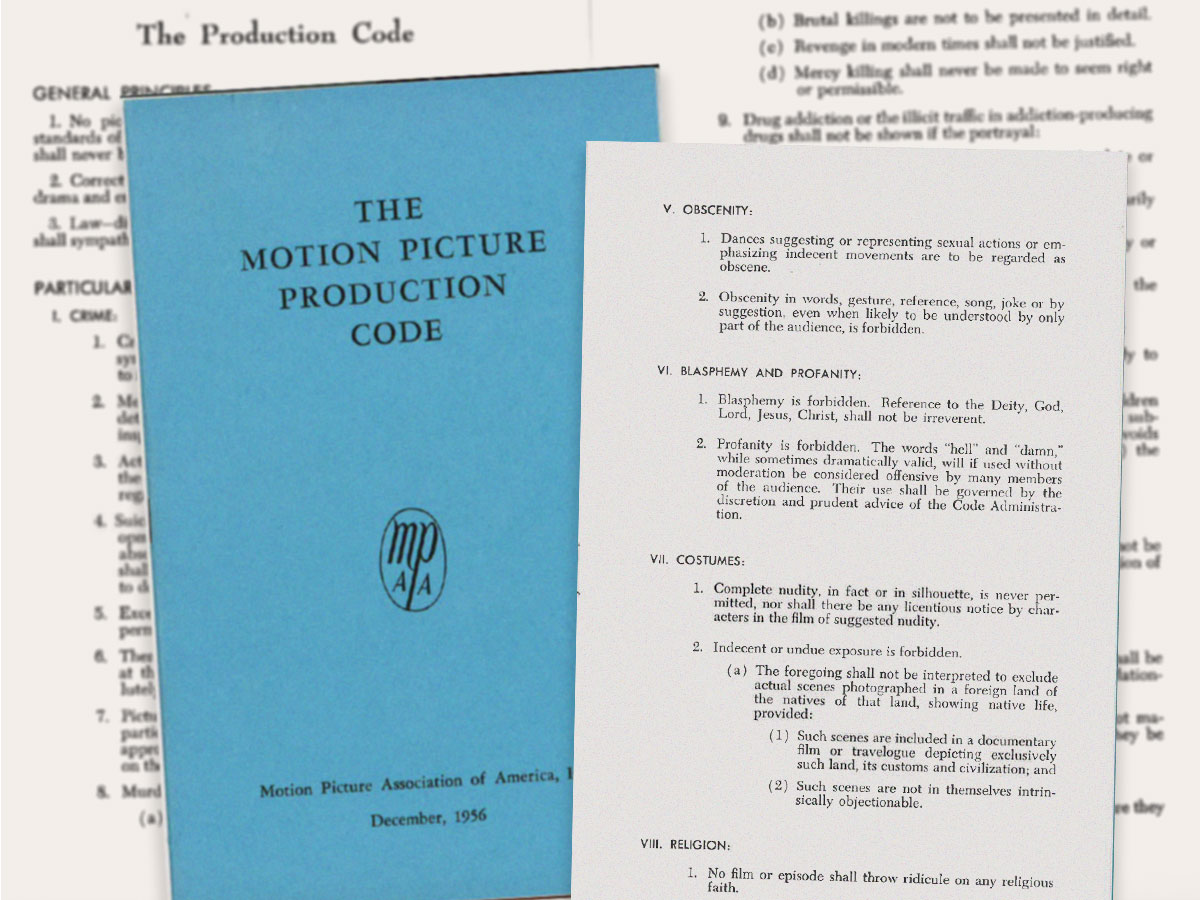
Setting
Guidelines
The MPAA revises the Hays Code to add guidelines on blasphemy and mocking clergy, but pulling back on prohibitions against depictions of interracial relationships, abortion, prostitution, and drug use.
Next
The Original
Ratings: G, M, R, X
Valenti establishes the modern MPAA ratings – a voluntary, self-regulatory system that would serve as a guide to help parents make informed decisions and a tool to stave off the spread of censorship boards.
Next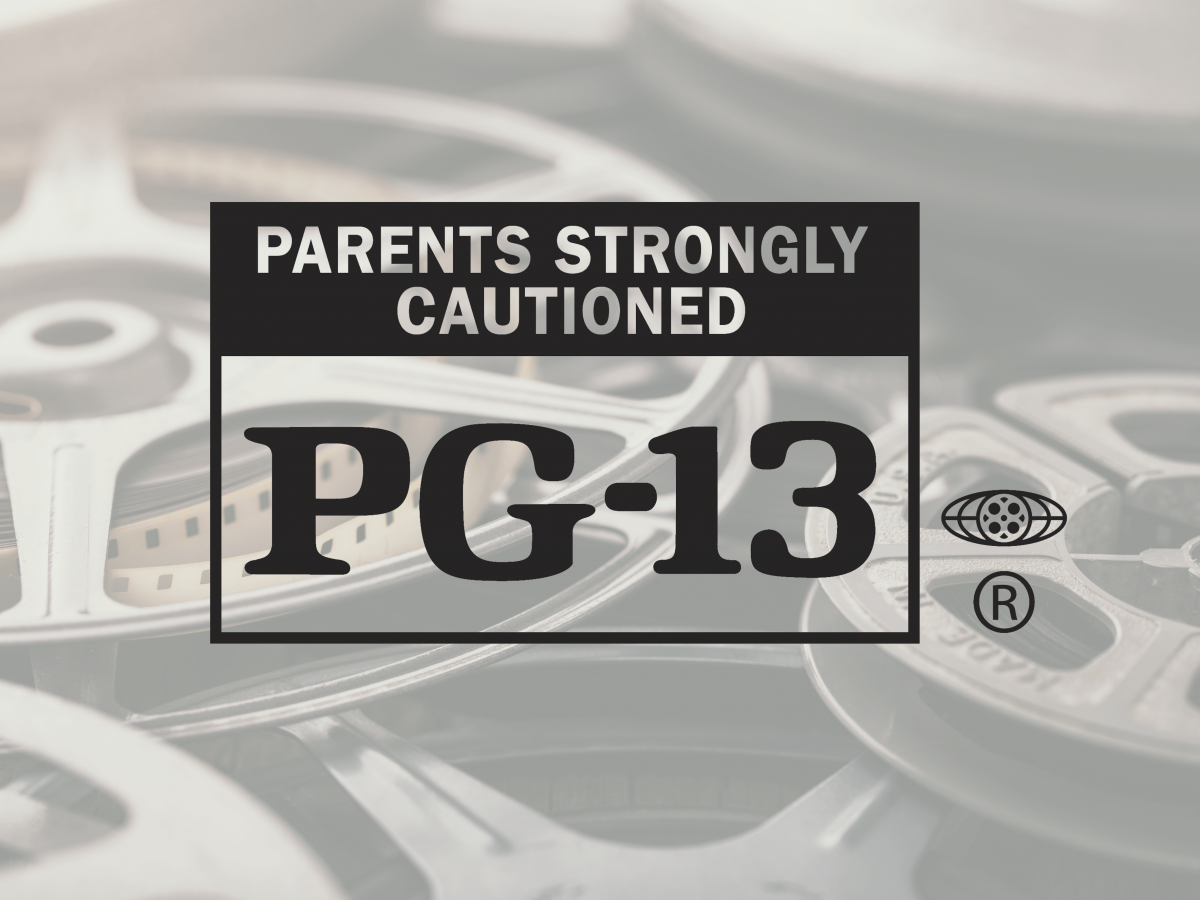
Finding
Middle
Ground
Recognizing a need for a middle ground between PG and R after films like Steven Spielberg’s Indiana Jones and The Temple Of Doom, the PG-13 rating is added, the first significant change to the rating system since its inception.
Next
What's in
this movie?
The rating board begins adding short explanations for ratings, or “descriptors,” to give parents even more information about the content of a film.
Next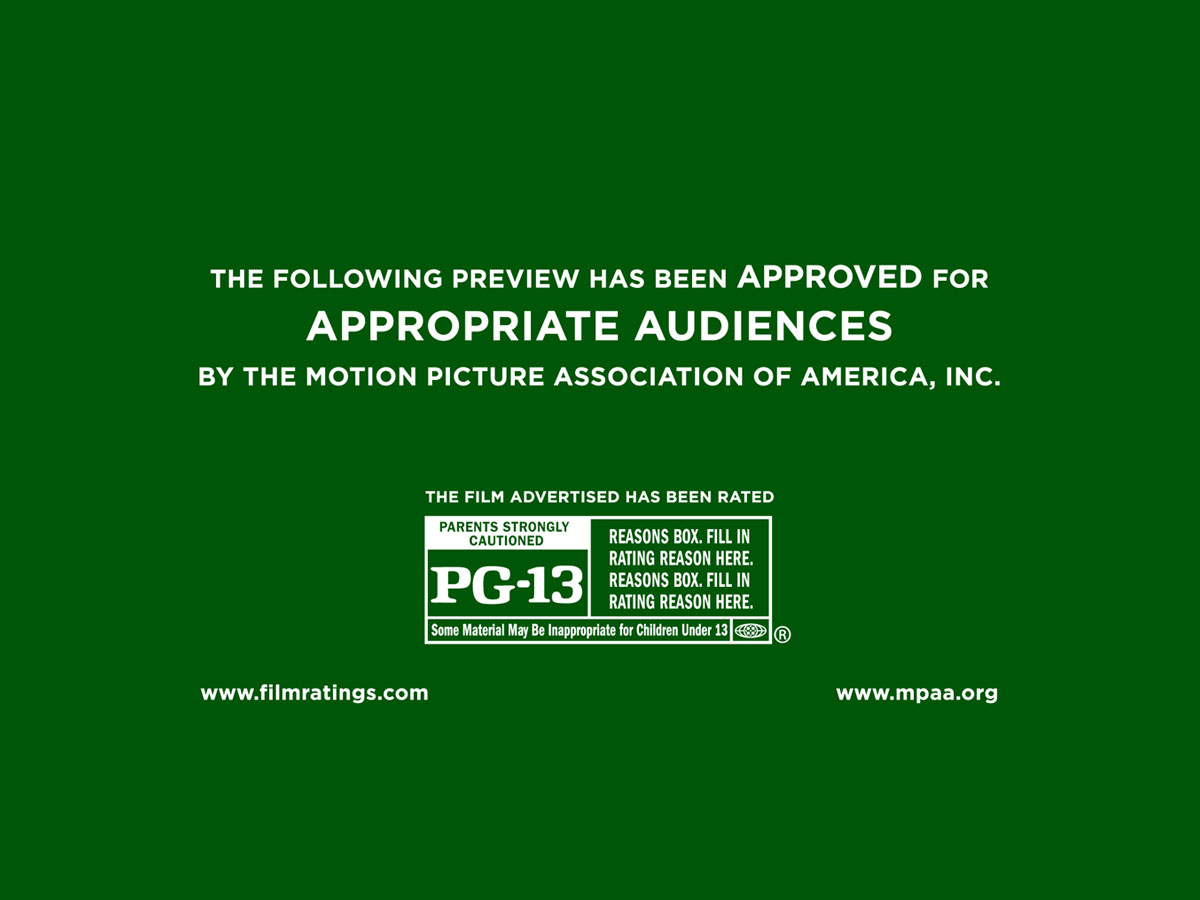
Advertising
Review
The MPAA’s Advertising Administration begins targeted review of movie advertisements - ensuring that trailers and other marketing materials are appropriate for intended audiences.
Next
Evolving With
The Times
The MPAA adds smoking and tobacco imagery as a factor in ratings. A filmmaker liaison position is also created as a point of contact for filmmakers.
Next
CELEBRATING 50 YEARS
Learn more about the origins of these voluntary guidelines, meet the key partners in the process, and find comprehensive and transparent answers to frequently asked questions about the MPAA Ratings.
Download report

